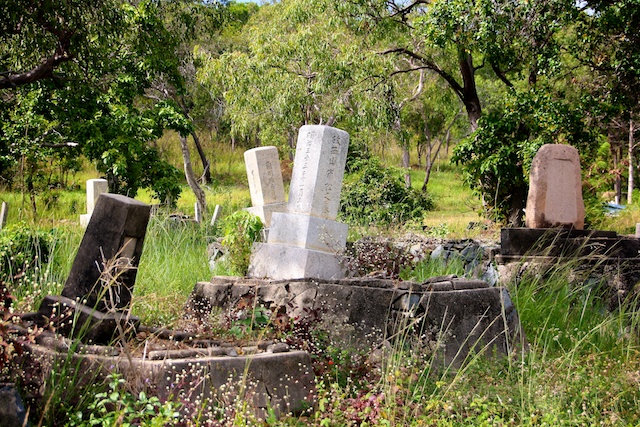At last I found a map of our trip to Cape York.
After our hike to the tip of Australia we returned to Bamaga for another night. The next morning Chris, our driver took us to the wharf where we said goodbye to him. Chris had to drive the bus back to Cairns to pick up the next tour group.
We were to catch a ferry across to Thursday Island, where we would meet another guide.
Thursday Island is one of many islands in the Torres Strait. TI as it is known has the best harbour and biggest population of all the islands. In 1606 The Spanish explorer, Luis Vaez de Torres, was the first European to navigate the strait between New Guinea and Australia. He was looking for Australia but he thought the tip of Cape York was just another island and so missed claiming Australia for Spain. However, the strait was named after him. It is only 150k/90m from Cape York to New Guinea.
The ferry took us to Thursday Island.
Torres Strait Islanders on board the ferry. Cute kids.
Not sure if this Tradie had a big night or if he's been working hard but he was catching up on some sleep on the ferry. People up here in the tropics are very laid back. No one is in a hurry, nothing is urgent.
We sailed between islands and the water was a magic colour.
As soon as we arrived we were ushered onto a tour bus with a local girl as driver and guide. She took us to the top of "Green Hill", which is actually brown in the dry season. At the top we had a view over the settlement.
The view, heat and colours reminded me of the time I lived in New Guinea, very tropical.
We visited the historic cemetery where hundreds of japanese pearl divers are buried from the times in the 1800's when the pearling industry was thriving here before plastics took over.
Then it was time to book into the Jardine Motel. We had fish and chips for lunch, settled into our room and then we went for a walk to explore the little township. The beach was at the end of the main street.
There was Quetta memorabilia in the church and a portrait of an islander leader in traditional dress.
I had to snap the "Royal Hotel" for my blogging friend Joan who is collecting pics of all the Royals in Oz.

Dinner at the motel was delicious Reef and Beef. The next day we had to go to Horn Island to catch a plane back to Cairns.










































.jpg)







